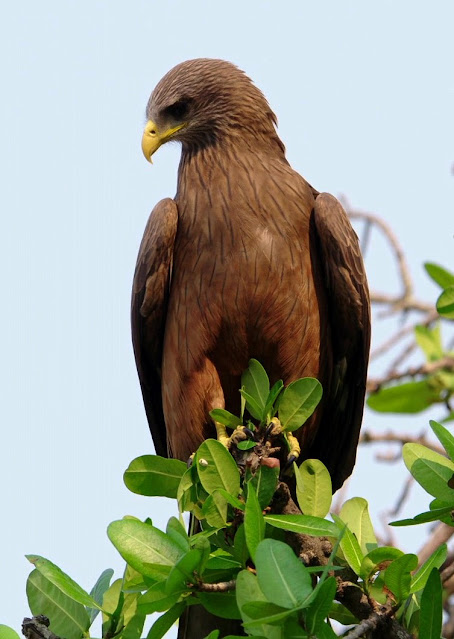The Cape gull differs from other forms of kelp gulls by its darker iris and larger body and bill size. The Southern African population is estimated to include 11,000 breeding pairs, and is expanding.
The kelp gull is referred to as the Cape gull in South Africa. There is currently a movement to have the gull that lives on the South African shoreline renamed to Cape gull, as it is so similar to the kelp gull, but they are not identical species.
The Cape gull is largely sedentary, and large colonies tend to stick to a favoured beach or coastal area. They frequently converge at popular feeding sites, and have been known to attack prey en masse.
This black and white gull is a common visitor to the beaches of the country. Its back and the tops of its wings are black; while the belly, head and tail are white. There are also white tips on the wings, called mirrors. The legs are a green-tinged yellow, which goes a brighter hue of yellow during the breeding season; and the bill is yellow with a vivid red spot on the underside.
Juveniles have a mottled-grey plumage, duller colouring on their legs, and a black bill. They take about three years to mature. The Cape gull has a shorter bill and a more angular head, and is differentiated by its pristine white tail and its dark-coloured eye.
Size
Range mass: 0.6 – 1.3kg
Range length: 54 – 65cm
Range wingspan: 128 – 142cm.
Gulls are, in general, flexible diners; happy to take whatever is available. Naturally, they tend to favour fish, worms, molluscs, smaller birds, and even small mammals and vermin. They have been seen picking up shellfish, soaring up, and dropping them from a dizzying height to break the exoskeleton.
They will prey on young and sick animals (including beached whales and dolphins, or even cattle), or those small enough to grasp and kill. They are often seen eating fast-food and rubbish that has been left behind by bathers on the beaches. They are omnivores, so they will also eat berries and fruit, where available.
Cape gulls live along the coastline of various countries and islands in the Southern Hemisphere, as well as in harbours, bays and estuaries. There are rarely found more than a few kilometres away from the sea.
In southern Africa, Cape or kelp gulls can be found in particularly large colonies between Cape Cross (western Namibia), through to the Great Fish River in the Eastern Cape. There are also non-breeding birds in Angola, Mozambique and Luanda.
The Cape gull is largely sedentary, and large colonies tend to stick to a favoured beach or coastal area. They frequently converge at popular feeding sites, and have been known to attack prey en masse. This is the case when they peck out the eyes of seal pups and then attack the blinded pups in a group, leaving little chance of escape. Breeding colonies are made up of hundreds of pairs, and are gregarious and social all year around.
This gull variety uses a grating, harsh “ki-och” to communicate with others of its kind.
The kelp gull's breeding season is between September and January, when it will pair with its lifelong partner and lay between two and three eggs in it shallow nest. The nest is a simple large hollow in the ground or on the rocks, which has been lined with feathers and leaves to keep it warm and comfortable for the chicks. Both of the parents incubate the eggs and, once the chicks hatch, they are both responsible for feeding them.
At about seven weeks old, the chicks are ready to fledge. They will reach sexual maturity at between three and four years of age.
Incubation
24 to 30 days.
Life Expectancy
Up to 20 years.







%2020.jpg)
%2021.jpg)

%2022.jpg)
%2023.jpg)















%2020.jpg)
%2021.jpg)
%2020.jpg)






%2020.jpg)
%2021.jpg)

%2020.jpg)
%2021.jpg)





